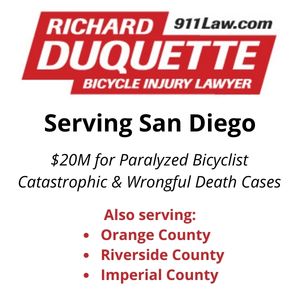
Even Buck Owens would probably think twice about walking the streets of Bakersfield these days.
The Central Valley city is the seventh most deadly city for people to walk in the US, and the only one in the top nine that’s not in Florida.
Then again, you probably don’t want to walk at all in the Bible Belt.
Surprisingly, though, Los Angeles didn’t even make the top 20.
………
A new Los Angeles-based startup created by the founders of the Wag dog walking service has hit the streets of San Diego.
Jonathan and Joshua Viner are positioning Wheels as the next generation in dockless personal mobility, a cross between an e-scooter and mini-bicycle that allows the rider to be seated instead of standing.
You can even recharge your cellphone. And play your music while you’re at it.
………
We may have to deal with distracted LA drivers, but at least we don’t have to worry about taking a massive header over a bike-hating deer.
Usually.
………
Turns out the left lane isn’t always the fast lane.
………
Local
Sahra Sulaiman writes that Leimert Park bike crew Black Kids on Bikes passed the community service torch to a younger generation of bike riders at this year’s King Day Parade.
Streetsblog says the Arroyo Seco Bike/Walk Path is damaged from the recent rains, but still passable.
Popular Mechanics recommends three affordably priced bikes from Burbank’s Pure Cycles.
Homegrown bike service company Pedal Movement will take over operation of the Long Beach Bike Share, which will be expanding into more areas of the city.
State
The Orange County physician who prescribed drugs to driver who fatally ran down Costa Mesa firefighter Mike Kreza has pled not guilty to charges of illegally prescribing opioids; drugs from the alleged Dr. Feelgood also made their way into the hands of the Borderline shooter.
An Anaheim man was killed in a suspected gang shooting while riding his bicycle Tuesday night.
Bike SD co-sponsored a one-night Holiday Lane last December, closing down a major Pacific Beach street for a carfree community celebration.
Hats off to a group of kindhearted Thousand Oaks teenagers, who are collecting 400 bicycles, as well as wheelchairs, crutches and shipping costs, for impoverished kids in Puerto Rico and Africa.
A San Luis Obispo Facebook group forms the basis of a 280 member, all female mountain biking group called SLO Dirt Girls.
Sad news from Fresno, where a bike rider was killed when a driver was briefly blinded by another car’s headlights.
Candidates for the board of the San Francisco Bicycle Coalition are being challenged on whether the bike advocacy group should accept money from car companies.
The Marin transportation board wants to steal a lane on the Richmond-San Rafael Bridge back from pedestrians and bicyclists just a tad sooner than expected, cutting a promised pilot program from four years to six months so they can give it back to motorists.
Friends can’t explain why a Marin County man was riding bike on a freeway, where he was struck and killed by at least three separate drivers as he swerved back and forth across all three traffic lanes.
National
He gets it. In a Newsweek op-ed, a GOP advisor questions why car-choked cities are banning e-scooters. More proof that common sense traffic solutions are not a partisan issue.
A new analytical tool based on publicly available cellphone data allows cities to get a more detailed picture of how many people are walking and biking, and where they’re going.
CNN recommends walking or riding a bikeshare bike to maintain a healthy lifestyle while traveling for business.
The Shift Up podcast discusses why a Denver man shuttered his bike shop, and started his own line of $800 DIY cargo bike kits.
Denver gives its Vision Zero program a passing grade, even though traffic fatalities are up in the Mile High City.
You may soon be able to get drunk and ride your bike in North Dakota. Or your horse.
They get it. A Minnesota newspaper tells readers to be a hero and don’t drive distracted.
Seriously? A Minnesota police chief is serving a one week suspension for choking a 12-year old boy he mistakenly thought was trying to steal his mountain bike, when the kid was actually just trying to pick it up after it had been knocked down. I hate bike thieves as much as anyone, but he should have been fired the moment he put his hands on the kid’s neck.
New York police are looking for a bike rider who attacked an Uber driver and his car with a U-lock, then jumped on the roof and hood when the driver attempted to get away. There’s never an excuse for violence. But you’d think the press might wonder what the driver might have done to provoke it.
Residents of New York’s West Village complain about derelict bicycles left on the sidewalks.
A New Orleans artist yarn bombed a bikeshare bike, covering everything but the wheels and pedals.
Fort Lauderdale FL is banning e-scooters during spring break, apparently preferring to jam the streets with smog belching cars than allow partying students to get around on small, clean machines.
A Miami TV station shows video of the Wheels Up, Guns Down protest in Miami that led to a white driver pulling a gun and yelling racial epithets at a group of black teenagers; the bike riders were protesting the redevelopment of a housing project. The incident is being investigated as a hate crime.
International
Road.cc tests whether the new Pinarello Nytro ebike is faster uphill than a lightweight roadie.
Turner Prize-winning artist Grayson Perry discusses why he loves riding his Vogue Elite bicycle around London. Note to Christies — it’s called a Dutch-style bicycle, not a ladies bike.
Sad news from Columbia, where a former dean from Vassar College was killed less than two-thirds of a mile into a planned 750-mile ride through the country.
Bolivia’s famed Death Road proved aptly named for a New Zealand bike rider, who slipped off a rain-slicked roadway and down a cliff while on a mountain bike tour with his fiancée.
Victoria, British Columbia plans to sacrifice a tree in one of the city’s busiest intersections to make room for bike lanes and a scramble crosswalk; urban forest advocates say not so fast.
For a monthly fee, a Dutch startup provides a working transportation bike and handles all the maintenance and repairs.
The most shocking thing about this video of a Swiss synchronized cycling team isn’t their amazing performance, it’s that AOL is still around.
National Geographic looks at the new 1,500-mile bike path that will connect cities and towns in eight Balkan countries when it’s completed. Thanks to the Previn Report for the heads-up.
A 27-year old Afghan man is trying to improve children’s literacy by riding his bike across the country handing out free books.
A homeless Australian man pled guilty to the hit-and-run death of a bicycling Dutch tourist; he was speeding at twice the speed limit in a stolen car on his way to buy drugs when he crashed the car.
Finally…
Now you, too, can be a virtual pro cyclist. Cars burst into flames, bikes aren’t supposed to.
And maybe there’s a better place they could have put this.
Just saying.


















